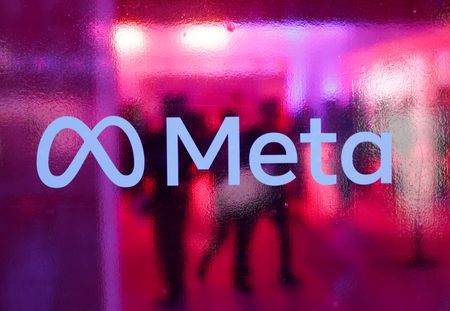By Aditya Soni and Deborah Mary Sophia
(Reuters) -Microsoft’s spending on artificial intelligence infrastructure soared to a record of nearly $35 billion in the September quarter, deepening investor concerns about the mounting costs of sustaining the AI boom.
The company also flagged growing AI demand and spending. Microsoft is one of the leaders of the global AI rollout, but investors and industry insiders have been debating whether there is an industry bubble that could pop.
The tech company said on Wednesday its capital outlay jumped 74% in its fiscal first quarter year over year, with about half directed toward short-term assets such as Nvidia’s high-priced chips to relieve capacity bottlenecks in its cloud business. Spending exceeded a Visible Alpha estimate of $30.34 billion.
The rising capacity and strong demand for AI services from businesses rushing to adopt the technology helped Microsoft’s Azure cloud business grow 40% in the July-September period, outpacing Visible Alpha’s estimate of 38.4%.
Microsoft forecast current-quarter Azure revenue growth of 37%, compared with Visible Alpha’s consensus estimate of 36.4%. Microsoft Chief Financial Officer Amy Hood told a conference call the company expected to be capacity-constrained on AI through at least the end of the fiscal year. Total revenue would be $79.5 billion to $80.6 billion, Microsoft said. Analysts polled by LSEG on average expected $79.95 billion.
Capital expenditure growth for the 2026 fiscal year will be higher than in 2025, Hood said. Last quarter, Microsoft predicted moderation in the growth rate for 2026.
“Azure guidance coming in just in line with expectations will likely disappoint investors given expectations have been so high for AI beneficiaries,” said Logan Purk, an analyst at Edward Jones. “The capex increase will only fuel the debate on generating appropriate returns on such a large capital base.”
SHARES DIP IN EXTENDED TRADING
Shares of the company were down 3.8% in extended trading.
The mounting spending comes as Big Tech is under growing pressure to show returns on massive AI investments.
Also reporting results on Wednesday, Meta said its spending next year would be “notably larger” than in 2025, while Alphabet boosted its projected capital expenditures for this year.
Adding to investor worries are circular deals, soaring valuations and limited evidence of AI productivity gains that have raised doubts about how long the boom will last.
“The capex number was a little bit worrisome. But still, their operating income is up 24%. It’s just that the stock is up a huge amount the past six weeks,” Bob Lang, chief options analyst at Explosive Options, said of the decline in Microsoft shares.
REVENUE JUMPS 18%
The company reported total revenue rose 18% to $77.7 billion, beating expectations of $75.33 billion, according to data compiled by LSEG. Its profit of $3.72 per share also beat expectations of $3.67.
The results follow Microsoft’s revised deal with OpenAI this week that gave it a 27% stake worth about $135 billion, as well as a cut of sales and access to intellectual property, clearing up uncertainty about the collaboration with the company synonymous with the AI boom.
The partnership, which gives Microsoft exclusive access to the models behind ChatGPT, has been key to Azure’s rapid growth in recent quarters and strengthened its challenge to top cloud provider Amazon.com. It is also crucial to Microsoft’s other AI services, such as 365 Copilot for businesses.
That AI push has turned Microsoft into the world’s second-most valuable firm with a $4 trillion market value, trailing only the $5 trillion chip company Nvidia. The stock, up nearly 30% this year, is among the best performers in the “Magnificent 7.” The after-hours share drop threatens the $4 trillion valuation, though.
Some analysts have praised Microsoft’s decision in recent months to let some OpenAI contracts go to Oracle, saying it shows discipline in steering limited AI capacity toward more profitable enterprise customers. The move is part of a broader strategy to lessen its dependence on OpenAI by building its own models and partnering with other AI firms, including Anthropic.
(Reporting by Aditya Soni and Deborah Sophia in Bengaluru; Editing by Maju Samuel and Rod Nickel)











